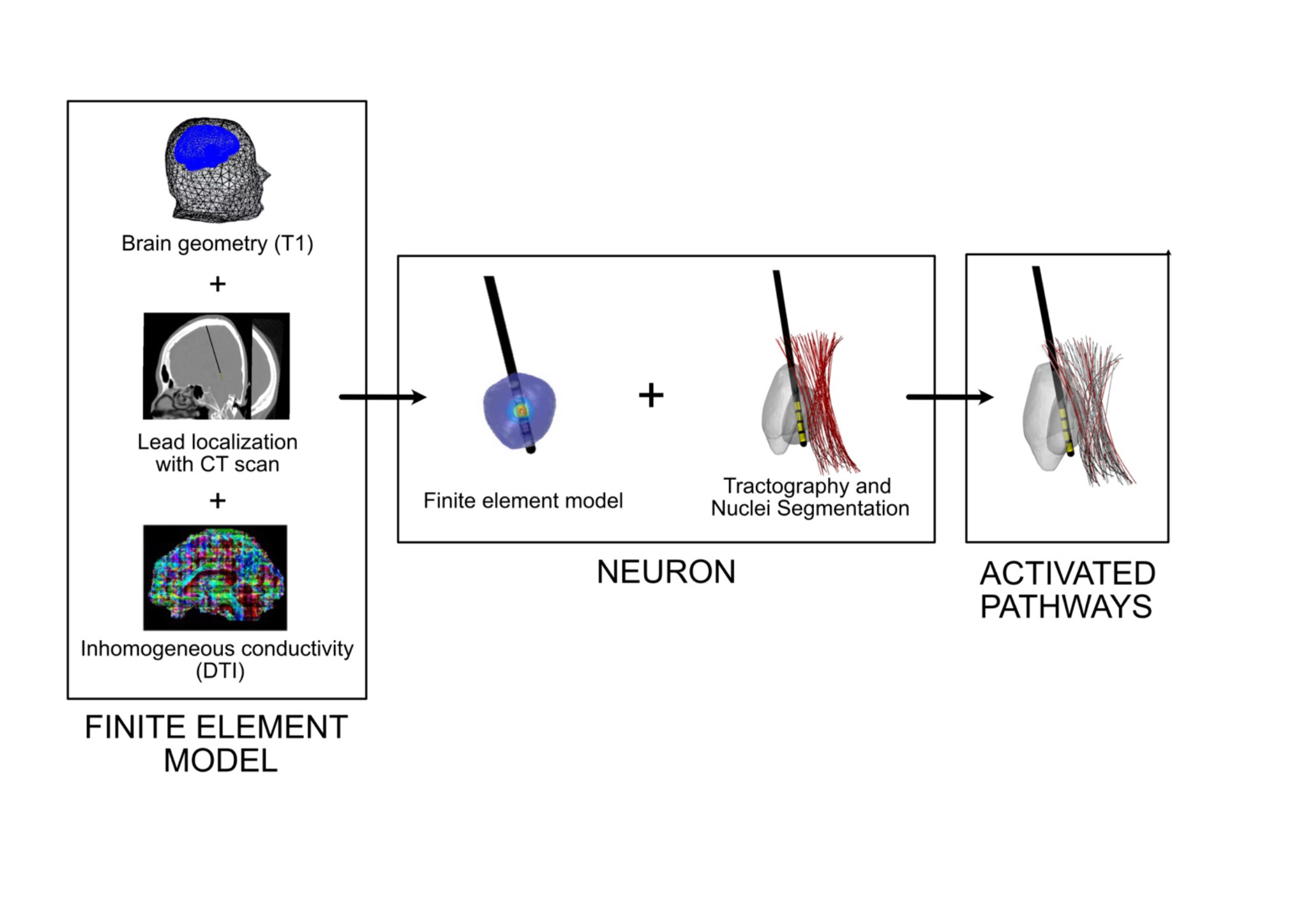Advanced Parkinson’s disease (PD) can be effectively treated with deep brain stimulation (DBS), However, DBS shows great heterogeneity in its effects across individuals. Patient-specific computational modeling is a novel approach used to analyze DBS-evoked modulation of regional neural pathways, allowing for the fine tuning of stimulation to optimize motor improvement in PD. Current computational models, however, fail to represent the direct and indirect pathways of the basal ganglia, which respectively promote and suppress movement.
PhD student Emily Lecy (Neuroscience), in a project called “Computational Models of the Direct and Indirect Basal Ganglia Pathways to Optimize Deep Brain Stimulation in Parkinson’s Disease,” is working to create a computational model of the direct and indirect pathways, determine how to use DBS to preferentially activate the direct pathway while minimally activating the indirect pathway, and assess the feasibility of this approach using model-derived settings in individuals and assessing upper and lower limb movement. This project provides the opportunity to create optimized individual stimulation parameters, which can reduce the numerous clinic visits needed for a clinician determine these fine-tuned settings.
Some funding for this project was provided by a 2022 University of Minnesota Informatics Institute MnDRIVE PhD Graduate Assistantship. The UMII MnDRIVE Graduate Assistantship program supports UMN PhD candidates pursuing research at the intersection of informatics and any of the five MnDRIVE areas:
- Robotics, Sensors and Advanced Manufacturing
- Global Food Ventures
- Advancing Industry, Conserving Our Environment
- Discoveries and Treatments for Brain Conditions
- Cancer Clinical Trials
This project is part of the Discoveries and Treatments for Brain Conditions MnDRIVE area.
Research Computing partners:
- University of Minnesota Informatics Institute
Complete list of 2022 UMII MnDRIVE PhD Graduate Assistantships.
